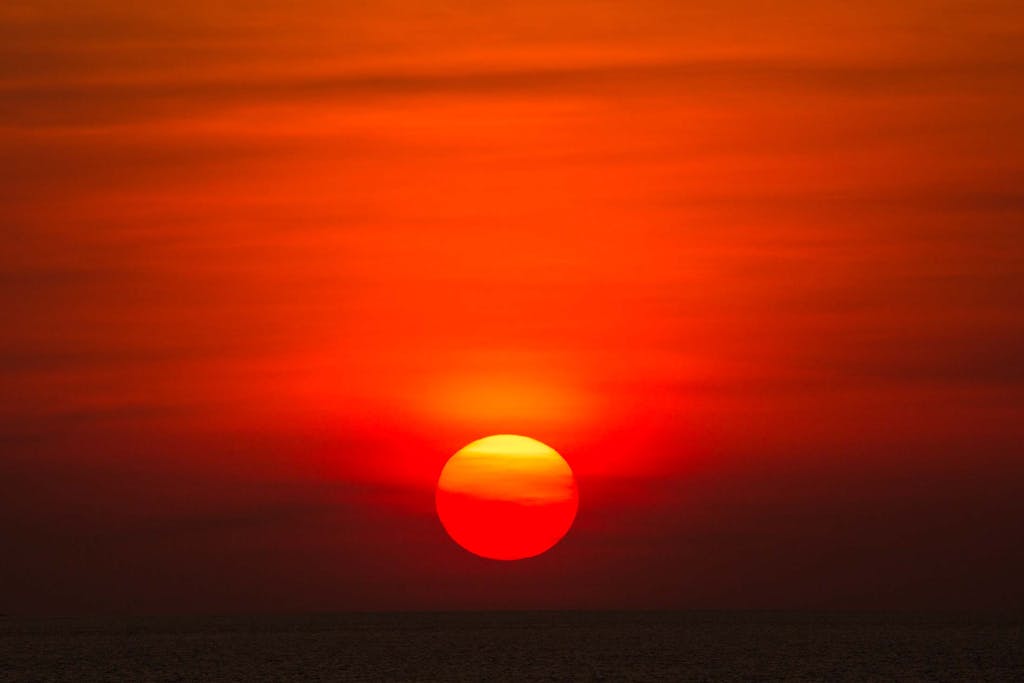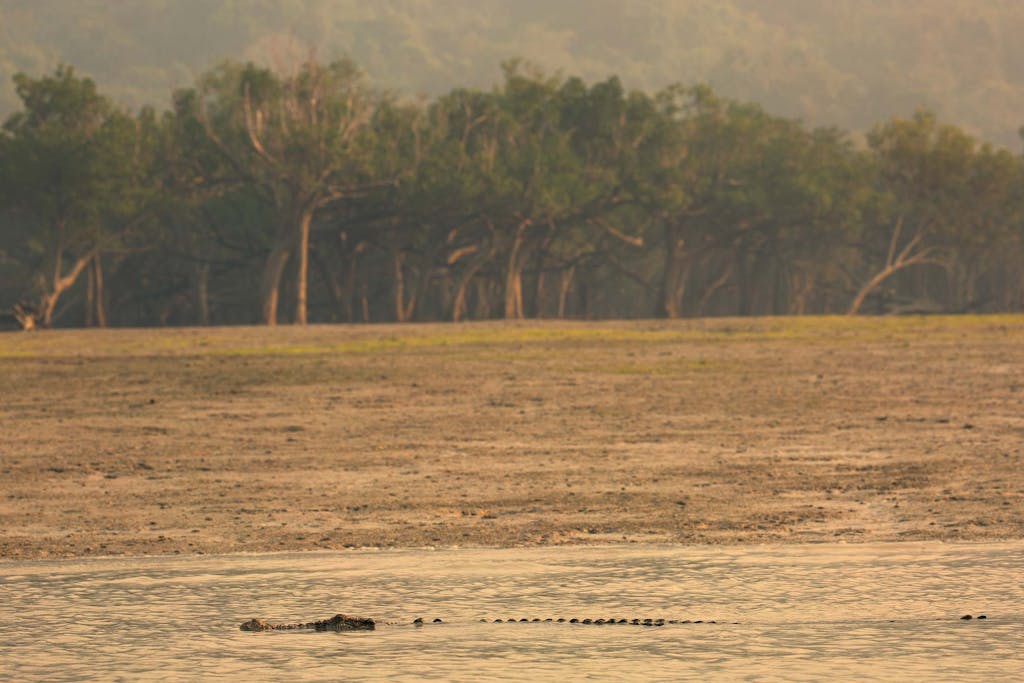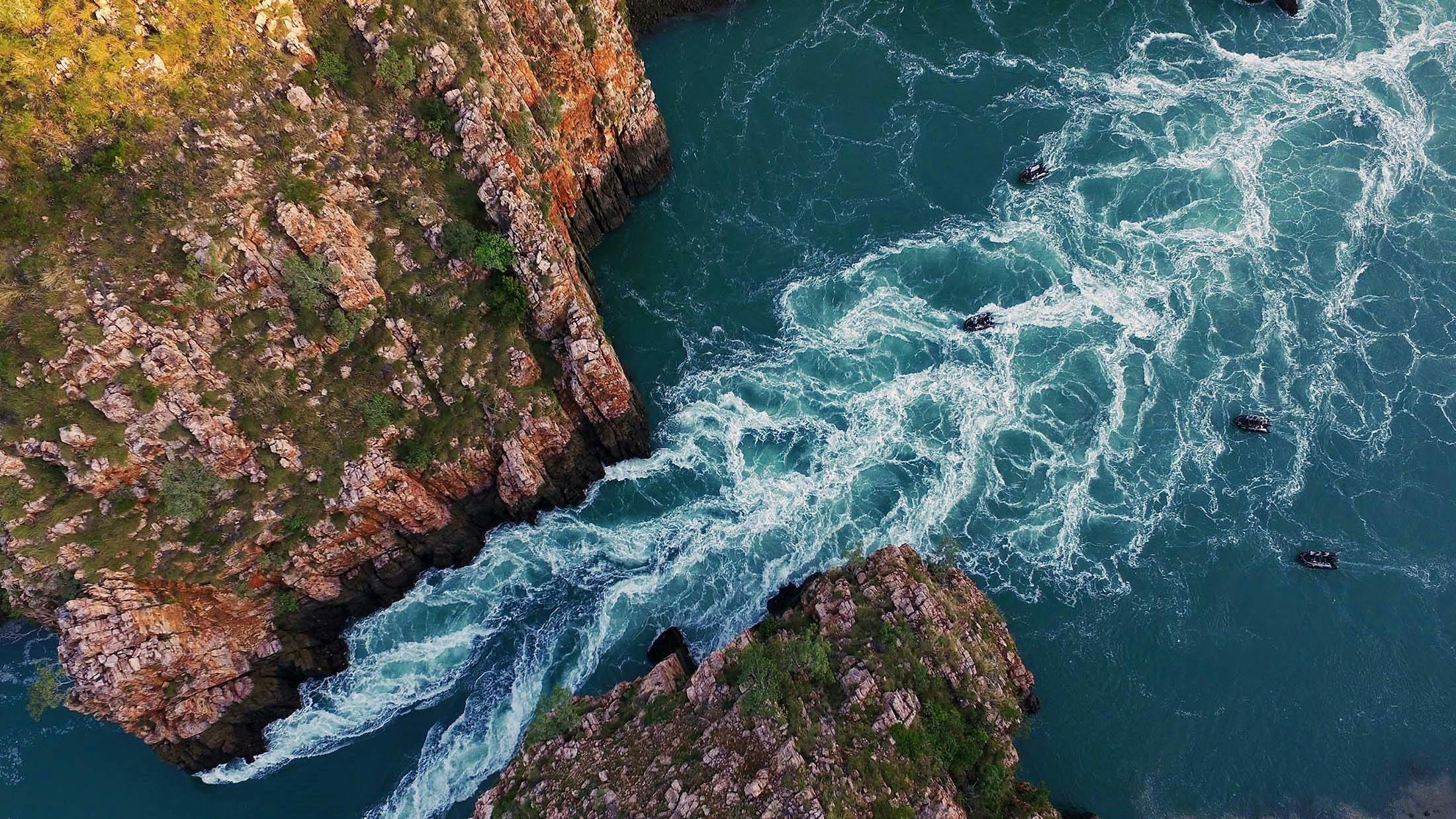Five Unmissable Experiences You Can Find Only in Australia’s Kimberley
A luxury cruise to the Kimberley in Western Australia takes you to a primordial land that remains pristine and relatively untouched. Stretching roughly 163,000 square miles (423,000 square kilometers), from the Indian Ocean in the west all the way to the edge of the Northern Territory in the east, with southern boundaries marked by the Tanami and Great Sandy Deserts, it’s a place where travelers can indeed get back to nature.
You’ll be the sole car on the dusty road for hours at a time and one of only a handful of people hiking the path to the varied attractions in the Kimberley: a refreshing waterhole, scenic gorge or majestic waterfall. It’s a place where you can really get away from it all and take time to appreciate the natural wonders of the Australian wilderness such as the Montgomery Reef.
Whether you’re exploring this vast region overland, along the Gibb River Road, or taking the less-traveled yet more adventurous route along the coastline by sea, the best way to see the Kimberley’s myriad wonders is by immersing yourself in this stunning and remote part of Australia. It’s sure to be an experience you’ll never forget.
1. More than 2 billion years of Earth’s history
To visit Australia’s Kimberley is to visit some of the oldest landscapes on Earth: The Precambrian rocks that make up the Kimberley Plateau are more than two billion years old, while an ancient barrier reef system, a remnant of the Devonian period 350 million years ago, towers high over Geikie Gorge, Tunnel Creek and Windjana Gorge National Parks. Dinosaur lovers can view ancient footprints left behind more than 130 million years ago at Gantheaume Point in Broome, which can only be seen when tides are extremely low. And these are just a few of Kimberley’s landmarks.
Purnululu National Park, often referred to as the Bungle Bungles, is home to uniquely striped mounds that resemble beehives. It’s an almost mythical site that was well-known to local Aboriginal people long before it was accidentally “discovered” in 1983 by a documentary film crew. Accessible only by four-wheel-drive vehicle—you’ll have to tackle an unsealed, zig-zagging 53-kilometer section of road once you turn off National Highway 1—the park provides a beautiful respite from the real world, with scenic walks through Echidna Chasm, Piccaninny Creek and Cathedral Gorge, among other hikes you can take through the spectacular, otherworldly scenery. Adventurous types can view it all from above via helicopter.

2. The Kimberley’s fiery sunrises and sunsets are without equal
While sunrise is often a beautiful time of day wherever you are in the world, the complicated coloration of the Kimberley landscape tends to make this time of day especially dramatic here. There’s nothing quite like hiking by the glow of your headlamp (or flashlight) and seeing the scenery around you gradually light up as the rocks, waterholes, gorges and desert terrain suddenly spring to life as the sun comes up. No need to worry if you’re not an early riser—sunsets in Australia’s Kimberley are equally spectacular, especially along the West Coast. In Cable Beach, you can experience the magic from the back of a camel, one of the most iconic ways to catch a sunset in this part of Australia. It may sound simplistic, but watching the sun rise or set is one of the most wondrous things to do in the Kimberleys.

3. The Kimberley is quintessentially Australian
The Kimberley is known for the diversity of its terrain—which ranges from desert plateaus and mountain ranges to exquisite coastlines lined with mangroves and stunning savannas strewn with boab trees—and its dizzying array of flora and fauna.
There’s also no shortage of wildlife in the Kimberley: Rock wallabies thrive there, especially on the islands of Lake Argyle, which is part of the Ord River Irrigation Scheme, located about an hour’s drive from Kununurra. Visitors also see fruit bats, fiddler crabs and a wide range of birds, including ospreys, sandpipers, egrets, White-bellied Sea Eagles and Mangrove Herons.
The Northwest Coast’s Yampi Sound is a favorite spot for bottlenose dolphins and humpback whales, which come to the area each year between June and September to give birth and raise their young. Freshwater crocodiles and their more ferocious cousins, saltwater crocodiles, can be seen in the Kimberley’s Hunter River Region and at Mitchell Falls. Proceed with caution and pay attention to signs posted at popular swimming holes, just in case.

4. Opportunities to learn about authentic Aboriginal culture are plentiful
According to a recent demographic study conducted by the Kimberley Development Commission, Australia’s Kimberley is home to roughly 18,000 Aboriginal people, which is about half of the region’s total population. This is the place to come to learn about the oldest living culture in the world, which is believed to have existed here in Australia for more than 50,000 years .
While Aboriginal culture is primarily reflected in the arts, crafts and dot paintings you’ll find for sale in local markets and galleries, it’s the region’s prolific rock art and dark history that provide the most significance. For generations, the traditional custodians struggled against invasion by settlers from Europe looking to establish cattle stations, iron ore mining and pearling. You’re likely to hear the story of Jundamarra, an Aboriginal warrior from the Bunuba clan who was eventually killed deep within the caves of Tunnel Creek National Park in 1897, following a series of guerrilla-type battles over cattle and land settlements .

5. You can observe the curious horizontal falls in action
One of the most intriguing features of the Kimberley is the Horizontal Falls of Australia, a natural phenomenon that occurs when the fast-moving waters of Talbot Bay rush forward to squeeze their way through the McLarty Range’s two narrow gorges. The result is an astonishing force of nature, which resembles river rapids or a horizontal waterfall effect.
Because of its remote location about 135 miles (220 kilometers) northwest of Broome, it’s only possible to view this fascinating phenomenon from the air (by helicopter or seaplane) or by Zodiac. The unforgettable, adrenaline-filled ride lets you get up close to the wild, rushing waters. It’s an experience befitting this unique region and ia one of the best reasons to visit Kimberley, Australia’s land of natural wonders.

